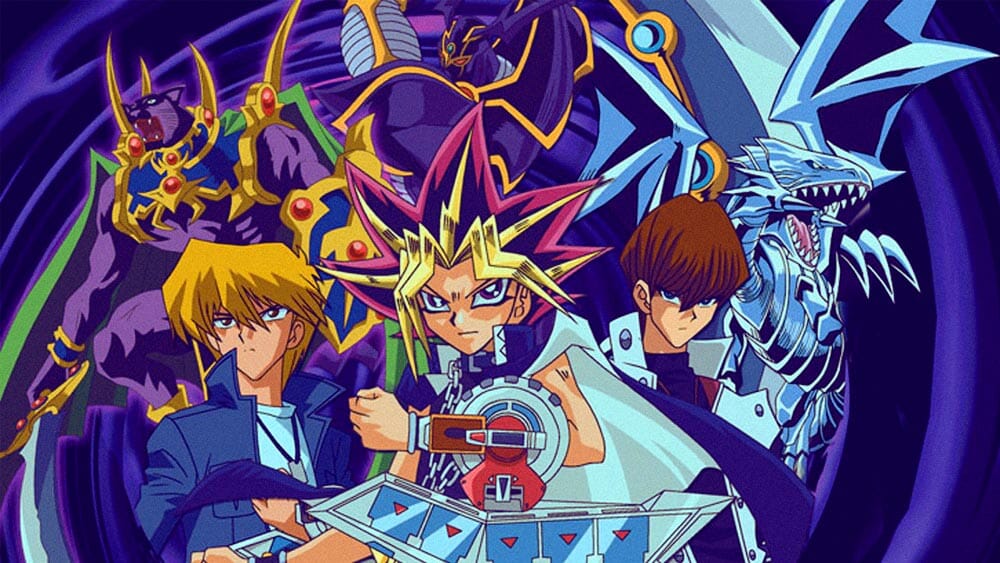With the digital collectible card game (CCG) industry estimated to reach $1.4 billion in revenue this year alone, the digital games component of Yu-Gi-Oh! has a lot of room to grow—especially given the fandom for the two-decade-old franchise.
For now, Konami seems committed to letting the IP’s physical card game lead the way for now. But few anime franchises have such a close relationship between their media content and games as Yu-Gi-Oh!. The animated show, which will hit its 20th anniversary in the spring, involves characters who compete against each other to become king of a magical card game called “Duel Monsters.” That naturally translates into both a physical trading card game and a digital one on mobile devices called Yu-Gi-Oh! Duel Links.
Robert Boyajian, marketing specialist for Konami Digital Entertainment, told AListDaily that the anime drives the physical card game. “People remember the classic stories and the rivalries between the characters.”
Both he and Yu-Gi-Oh! Duel Links senior producer Kenichi Kataoka said connections to the show provide both the physical and mobile games a special advantage. Yu-Gi-Oh! fans who tune in to the latest episodes of the current anime series, Yu-Gi-Oh! VRAINS, get to preview new cards shortly before they come out for the physical game. At the same time, they get to live out their fantasies of becoming one of the show’s characters and striving to be masters of the game.
Yu-Gi-Oh! VRAINS, the fifth series to be spun off from the core franchise, marks the first show to broadcast episodes in Japan and the US at the same time, synchronizing it internationally with the launch of its physical products.
“Trading card games have a social dynamic compared to digital games,” said Boyajian, describing the continued appeal of the physical card game when digital games are fast on the rise. “You have to sit across from people and interact with them, and because of that, there’s a big community when it comes to trading card games. I think that communal aspect is what drives tabletop gaming in the digital age.”
The physical card game remains comparatively more advanced than the free-to-play Duel Links, which launched for Apple iOS devices in 2016, Android in 2017 and released for the PC via Steam in November. Both Boyajian and Kataoka describe Duel Links as a more simplified version of the physical card game, and it only has about 2,000 of the 8,000 physical cards with no special exclusives, covering both the original show and its first spin-off from 10 years ago. This being the case, Duel Links does not share the same connections with the show that the physical game does.
However, Kataoka explained that the digital game makes up for it with accessibility, which is its biggest strength, especially given how players have easier access to it through their mobile devices. Konami is treating the digital CCG as a means of introducing new audiences to the franchise while engaging current ones, as it can prepare players for the physical cards game. But at the same time, he said that audiences tend to be attracted to digital games for the opposite reasons Boyajian believes fans are drawn to the physical versions.
“I think one of the major factors is that a lot of people want to play card games, but they don’t necessarily have the time or money to go to a shop, find an opponent and meet up with them,” Kataoka said to AListDaily through a translator. “Digital card games allow them to play them on-the-go. That sort of accessibility, combined with the basic philosophy of card games—collecting cards—are the biggest draw.”
Kataoka added that a digital game offers people a chance to compete against players from around the world, who return as new cards are added. He also said that longtime fans of the show may appreciate how Duel Link is fully voiced, giving them the feel of playing with their favorite characters.
“We want to keep creating an experience where fans of the show can enjoy playing the game through character interaction,” said Kataoka. “Characters such as Yugi and Kaiba have become sort of cultural icons, and I’m sure lots of people love them.”
Although the physical Yu-Gi-Oh! card game remains mainly anime-driven, with engagements through its website and social media, major events are a strong priority for the franchise.
In October, Konami brought both Duel Links and the physical game to the New York Comic Con, where it hosted tournaments and had experts on-hand to teach attendees how to play. At the same time, world championship competitors engaged with fans by answering questions while showcasing new Yu-Gi-Oh! products. Additionally, Konami brought a “token booth” to these events, where attendees could have stylized photos of themselves placed onto official cards that can be played.
These events, coupled with an evolving franchise, keeps fans enthusiastic for the 20-year-old series. To date, Yu-Gi-Oh! has spawned a multitude of anime and manga comic book spin-offs, several video games and three movies.
“[Fans] get excited any time there’s a new product or when we release a new anime,” said Boyajian. “It’s something that they look forward to. The game constantly changes, so even though it’s pretty old, every series introduces something new to spice things up.”
Boyajian also makes a case for the physical game, stating that cards feel more collectible as a physical property, which is why its community continues to drive that market.
“Collecting digital items is great, and many people are excited by it, but being able to hold the physical cards and play them feels very different,” he explained. “It feels more decisive, and I think it’s a feel that people like.”

